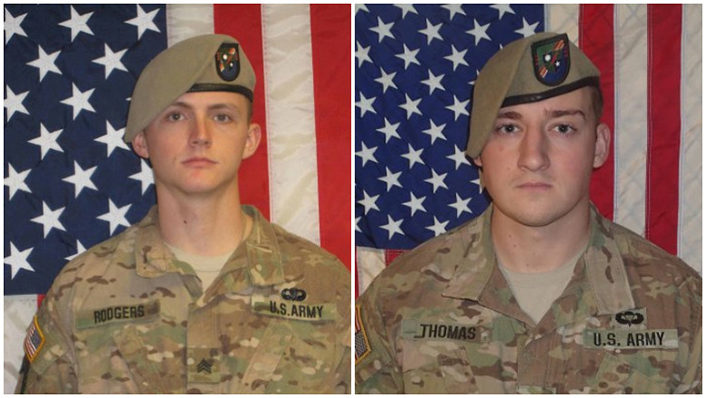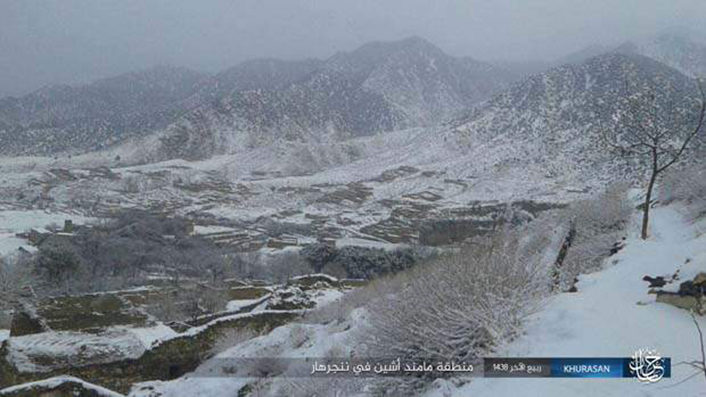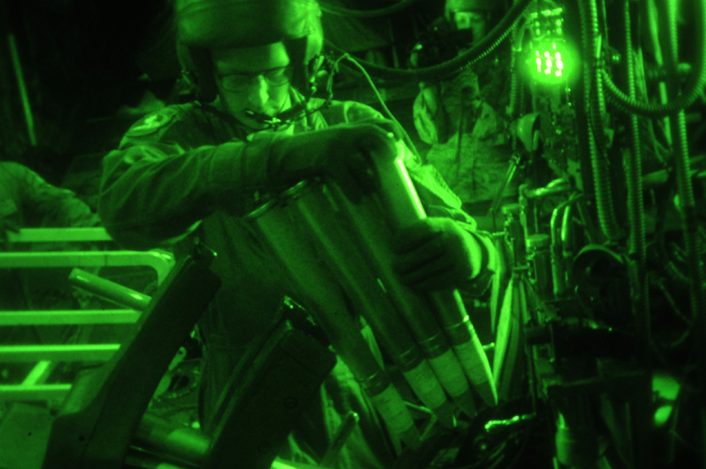Army Confirms U.S. Raid in Afghanistan Following MOAB Strike Killed ISIS-K Leader.
The U.S. military confirmed in a statement on May 7 that the ISIS-K leader in Afghanistan, Sheikh Abdul Hasib, was killed by a combined air/ground operation last month.
The raid included airstrikes by U.S. F-16s, AC-130s, drones and AH-64 Apache helicopters along with elite Army Rangers from the 3rd Battalion, 75th Ranger Regiment of Fort Benning, Georgia. The combined air/ground raid followed the April 13 airstrike by a U.S. Special Operations C-130 using the first massive eleven-ton GBU-43B MOAB (Massive Ordnance Air Burst) ever dropped in combat.
Two Army Rangers, Sgt. Joshua P. Rodgers, 22 years old from Normal, Illinois, of Company C, 3rd Battalion, 75th Ranger Regiment and Sgt. Cameron H. Thomas, 23 years old from Kettering, Ohio, of Company D, 3rd Battalion, 75th Ranger Regiment were killed in action during the raid. A statement issued by U.S. Forces in Afghanistan reads: “USFOR-A is investigating the possibility that the two Rangers were accidentally killed by friendly fire during the more than three-hour fight.” Both of the Army Rangers killed were on their third deployment to Afghanistan.

The Commander of U.S. Forces in Afghanistan, General John Nicholson, released a statement saying the raid by Army Rangers was “another important step in our relentless campaign to defeat ISIS-K in 2017.” General Nicholson also wrote, “This is the second ISIS-K emir we have killed in nine months, along with dozens of their leaders and hundreds of their fighters,” Nicholson said. “For more than two years, ISIS-K has waged a barbaric campaign of death, torture and violence against the Afghan people, especially those in southern Nangarhar.” (Editor’s Note: “ISIS-K” is the designation for “ISIS-Khorasan”, the ISIS cell in the region.)

Efforts to neutralize ISIS-K leader Sheikh Abdul Hasib were accelerated following a deadly terrorist raid directed by Hasib earlier this year on March 8. The ISIS-K terrorists dressed in hospital uniforms to infiltrate the Sardar Mohammed Daud Khan hospital in Afghanistan after one of their suicide bombers initiated the attack by blowing himself up at the south gate of the facility. Over 30 people were killed in the hospital following the six-hour attack by the terrorists.
The Rangers from the 3rd Battalion, 75th Regiment were spearheading a combined air/ground operation in cooperation with Afghan forces that included armed surveillance RPV’s, U.S. Air Force F-16s and an Air Force AC-130 gunship along with U.S. Army AH-64 Apache gunship helicopters. Over 50 Army Rangers participated in the raid that lasted “several hours” and began at approximately 22:30 local time under cover of darkness. The Rangers were inserted into the area by helicopter.

Army Ranger teams include members trained to coordinate airstrikes in conjunction with their ground operations. However, de-conflicting airstrikes in close proximity to enemy troops in the dark and in mountainous terrain, and airstrikes within 1000 meters usually called “danger close”, is inherently dangerous.
Because of the possibility of a formal investigation into the deaths of Sgt. Rogers and Sgt. Thomas no details have been released about the specific aircraft or units that conducted the airstrikes supporting the Ranger raid that neutralized Abdul Hasib.
Top image: file photo of an F-16 Fighting Falcon takes off from Incirlik Air Base, Turkey in support of Operation Inherent Resolve Aug. 12, 2015. (U.S. Air Force photo by Senior Airman Krystal Ardrey /Released)













